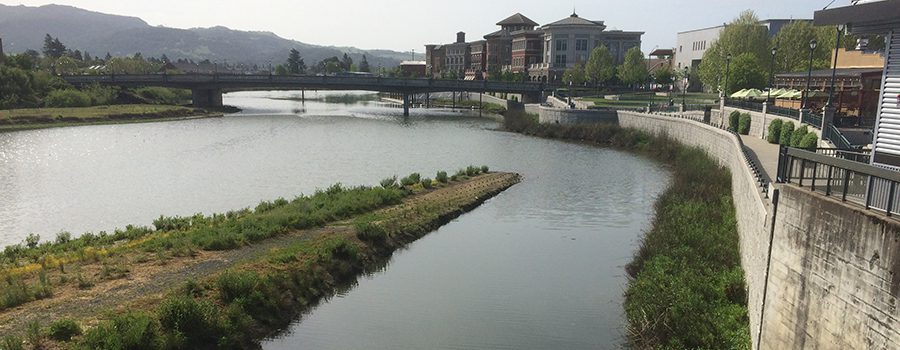On a regular basis, we will focus on hot topics as they emerge in the water resources and environmental arenas. The following kicks off the list for the year:
Corps of Engineer’s Funding — Work Plans
With the demise of the earmark in Congress a number of years ago, there emerged a different sort of funding approach, one in which the agency itself gets to determine which projects gets funded and how much should be allocated. This approach, which results in a master list of projects per state and by type of funding, (General Investigations, Construction, Operations, and Maintenance, so), known as the Work Plan is the Corps’ equivalent of the earmark process, and is developed at the Corps’ District level based on projects’ schedules and need, as well as Congress’ policy direction. The list is then sent up through the Corps’ Division level for review and prioritization, then sent to Headquarters for review, revisions, and approval. After Headquarters reviews the Work Plan, it then moves to ASA’s office, then to OMB for review and consideration before being released to Congress and the public. Each of these levels, as well as, ASA and OMB gets the opportunity to review, revise, eliminate, or add projects and funding.
Over the last several years, Congress, while prohibiting itself from earmarking, has had the House and Senate Appropriations Committees weigh in to provide direction to the Corps on how the appropriated funds should be spent. Over the last year in particular, Congress provided clear and fairly specific direction, especially with regard to how those funds beyond the budgeted levels should be spent. Matters such as how many new construction and study starts, how much funding for each Corps’ mission area should be spent, when the Corps needs to submit the Work Plan and the underlying justification and criteria used in determining which project should be funded are all a part of Congress’ very focused and directive language to the Corps of the use of the funds. Another matter that was carefully discussed in the FY16 Energy and Water Development Committee Report was that it was Congress’ intent for all of the funds to be allocated, and not to leave large sums unallocated to be used when and how the Corps determined. This was in reaction to the Corps FY15 Work Plan, when for many months, the Corps left tens of millions in unallocated funds for later use, while projects which could have used the funds sat unfunded.
The Corps was given 60 days from the enactment of the Omnibus Appropriations Bill in mid-December, to release the FY16 Work Plan in accordance with Congress’ directives.
FY16 Work Plan — Released February 9, 2016
The Corps released its FY16 Work Plan hours after it released the Administration’s FY17 Budget and it was a study in contrasts. While the budget was drafted to include no new starts for General Investigations and one new Construction start, the FY16 Work Plan was more freewheeling and responsive to the Congress’ wishes in providing a healthy amount of new Feasibility starts (a total of 10). It also included a number of preconstruction engineering and design efforts, (a total of 4) and in a nod to Congress’ direction, a significant amount of new construction starts (a total of 6) were included. While we are still analyzing this recently released document, it is fair to say as we have seen in previous years, key criteria, such as benefit cost ratios for flood protection projects are not the sole or in some cases, not the most important evaluation tool. Congress has asked for the Administration’s decision-making criteria for the Work Plan and we are confident it will be evaluated closely.
Water Resources Reform Development Act of 2014, and Upcoming WRDA 2016
WRRDA 2014, besides developing an approach to authorize projects while not earmarking within the legislation, also included provisions to reform certain practices of the Corps and importantly, provided local sponsors with new opportunities to advance and fund projects. Provisions such as allowing for credit in lieu of reimbursement, and sponsors being able to transfer credit from one project to another, along with a credit approach allowing sponsors to advance projects by planning, designing, and constructing projects in advance of the Corps, all provide sponsors with the tools to expedite federal projects for their communities.
The WRRDA legislation also provided opportunities for the Corps and sponsors to advance and finance public private partnerships (p3’s) through a number of measures, including the P3 Pilot Program, as well as the Water Infrastructure Finance Innovation Act (WIFIA) where, like the Transportation Infrastructure Finance Innovation Act (TIFIA), private investment can be combined with federal financial assistance provided under the program to finance public water resources projects.
All of the provisions of WRRDA 2014, like the WRDA legislation before it, require Implementation Guidance developed and approved by the Corps before the provisions can be implemented. While the Corps has provided Implementation Guidance for a significant number of provisions, dozens of provisions are still awaiting Implementation Guidance.
House Transportation and Infrastructure Chairman Shuster is making good on his intention that he planned to hold hearings for WRDA 2016 in the spring of 2016, as these hearings are now proceeding and mark-ups are being planned for legislation under development. In fact, the House Committee approved its WRDA 2016 bill on May 25th. Congress put provisions in place in the 2014 WRRDA to help develop future WRDA legislation by requiring annual submittals of potential projects and provisions to prime the pump. The Senate Environment and Public Works Committee requested Senators to submit their WRDA needs by mid-February of 2016. The Senate Environment and Public Works Committee approved its 2016 WRDA legislation on April 28th. Both Committees are now working to get their bills to their respective floors.
Public-Private Partnership Program
Over the last number of years as part of its Civil Works Transformation Initiative, the Corps has been discussing the concept of public-private partnerships as a project delivery mechanism. Congress has become very interested and supportive of the concept of public-private partnerships. In fact, as a result of its interest in expediting project delivery and project benefits, and leveraging federal investment by encouraging non-federal contributions to projects, Congress included Section 5014, the Water Infrastructure Public-Private Partnership Pilot Program in 2014 WRRDA, as mentioned above.
The concept in the Public-Private Partnership legislation is for the Secretary to establish a pilot program to evaluate the cost-effectiveness and project delivery efficiency of allowing non-federal pilot applicants, including not only non-federal sponsors, but private entities who have the consent of the local government in which the project is located, to propose and proceed with project delivery approaches. This, of course, is quite a new development for the Corps to bring private entities not only into the local sponsor role for Corps’ projects beyond the navigation mission, but under the provisions of Section 5014, for the private entity to be provided full project management control for the financing, design, or construction of the project, in accordance with plans approved by the Secretary. Under Section 5014, the Secretary is to identify for inclusion in the P3 pilot program 15 projects that are authorized for construction, advise the House and Senate authorizing committees and proceed in consultation with the non-federal pilot applicant with a detailed project management plan leading to a project partnership agreement and project execution by the non-federal pilot applicant.
In the Omnibus Appropriations Bill of FY16, Congress included a strong statement of support for the P3 Pilot Program and directed the Corps to submit to the Appropriations Committees within 45 days after enactment of the Omnibus, a report detailing any work to date on developing public-private partnerships generally, and on implementing Section 5014 specifically, including a schedule for issuing implementation guidance. Congress also requested a list of P3 demonstration projects being evaluated by the Corps and a description of the goals, advances, and challenges for the projects. Congress also directed the Corps to select one of the P3 projects in the Corps report as a new construction start.
Clearly, Congress wants to see the Corps take action on the P3 model to implement projects more quickly and more cost-effectively. How and whether the Corps can break out of its traditional model of constructing its projects it has planned and designed and doing so on its own schedule, and turning it over to non-federal partners, including the private sector, will be an interesting challenge for the Corps. Of course, many local sponsors have advanced pieces of projects and sometimes, whole projects, but these have not typically been private sector entities, at least not in the flood control and ecosystem restoration arenas. We will be engaging in this arena and reporting on developments as we see them in this very innovative space. There are plenty of opportunities here for non-federal sponsors and for private entities to expedite project construction, as well.




